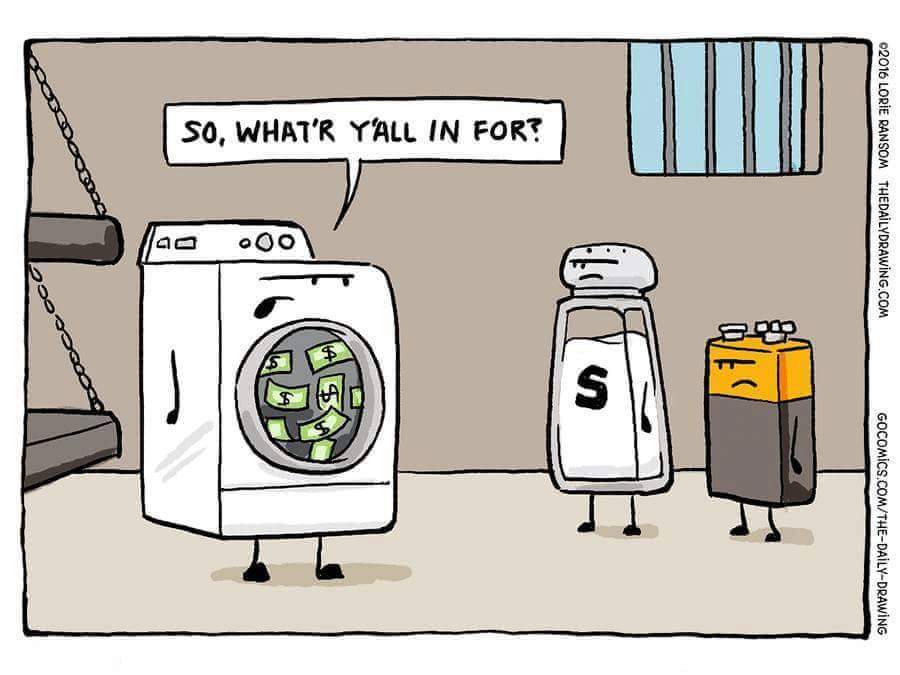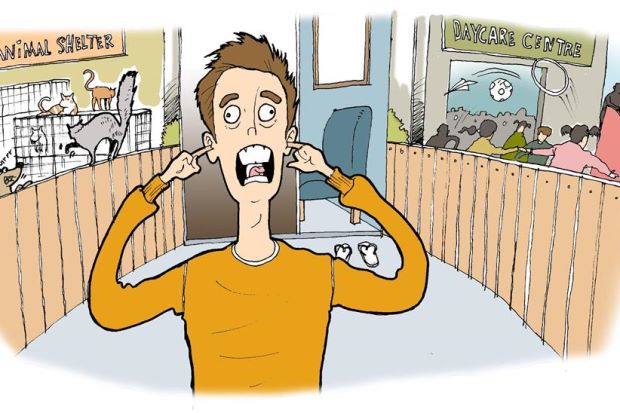

Civil
Did you know you can be taken to court for something that is NOT a crime?
about 8 years ago jowluneA tort is a kind of wrongdoing that you can be sued for, sometimes due to no fault of your own! If you ask around, many people might not know what the word “tort” means; or they might think you’re referring to a type of dessert. The thing is, you’ve probably come across plenty of torts on a daily basis. Think about those news articles about people who are looking for compensation from others who have done something wrong to them. Neighbours suing each other for making noise, celebrities suing tabloid magazines for defamation - that’s tort law in action.
The word “tort” simply means “wrongdoing” but this kind of wrongdoing can either give you a reason to sue, or get sued. Tort Law is quite a complex area, but in this general guide, we’ve tried to simplify things to a need-to-know basis, so that you can get an overview of tort law and learn about how it can affect you in every day life.
[You tort it was this, didn't you?]
How are torts different from crimes?
The main difference between torts and crimes is that in tort, the aim is to compensate the injured party. In crime, the aim is to punish the offender. In criminal cases, it’s the government who will charge someone for a wrongdoing, not the person who has suffered the injury. We can put this in perspective using this example:
Say you go into a shop and ask the shopkeeper if they sell hammers. The shopkeeper has just had a fight with her boyfriend and seeing you reminds her of him for some reason. She gets angry and takes it out on you by throwing a hammer at you. The hammer hits you on the head and you have to be taken to hospital where you incur medical bills, loss of wages, pain and suffering. If you bring a case under tort law, you would be suing the shopkeeper in a civil case to get her to compensate you for all the losses you have suffered. This will be the only punishment and she will not go to jail. However, if you call the police and have them arrest the shopkeeper, it becomes a criminal case. It is then up to the state whether to press charges or not.
[You will need an MC after Hammer Time]
You should know that suing someone in Tort is also different from suing for a breach of contract. This is because a contract involves all parties agreeing on a bunch of terms. However, under Tort law, there is no need for a contract because these laws are there to make sure people behave cautiously (especially when it’s possible for their actions to injure other people.) In other words, they require all people to act reasonably when going about their daily lives.
So how does it work?
There’s a basic formula for determining whether someone has committed a Tort. First, there must be an act or omission (failure to act) by the wrongdoer which causes damage to you. This damage must be caused by the fault of the wrongdoer and must be the kind of harm recognised by law (e.g. personal injury, loss of income etc.)
The most common example of this is a car accident:
A drives his car carelessly on a pedestrian walkway and hits B, causing injuries to B. The act is A driving the vehicle. This act has caused damage to B. The damage was as a result of A’s carelessness, i.e. his fault. The injury suffered by B, personal injury, is recognised by law as attracting liability. A will be liable to B in the tort of negligence and B will be able to recover damages.
How can torts protect me?
The purpose of torts is to protect your interests, to make sure you can gain compensation if you have been hard done by, or to stop someone from doing something which negatively affects your interests. There are many kinds of interests protected, but we’ve listed out some of the more common ones that you may find easy to relate to:
1. Personal security
If someone threatens to hit you and makes a gesture to that effect, you may have an action in the tort of assault. If they actually hit you, then you may have an action in the tort of battery. There is a common misconception that you are assaulted if someone physically hits you but this is incorrect. Section 351 of the Penal Code defines Assault as follows:
Whoever makes any gesture or any preparation, intending or knowing it to be likely that such gesture or preparation will cause any person present to apprehend that he who makes that gesture or preparation is about to use criminal force to that person, is said to commit an assault.
The section provides an explanation and illustration of Assault:
Explanation—Mere words do not amount to an assault. But the words which a person uses may give to his gestures or preparation such a meaning as may make those gestures or preparations amount to an assault.
ILLUSTRATIONS
(a) A shakes his fist at Z, intending or knowing it to be likely that he may thereby cause Z to believe that A is about to strike Z. A has committed an assault.
Generally, if someone causes personal injury to you by accident, or negligently, you may have an action in the tort of negligence. In order to win a negligence case, the plaintiff (or the person injured) must prove the following four elements to show that the defendant (the person allegedly at fault) acted negligently.
- Duty - The defendant owed a legal duty to the plaintiff under the circumstances
- Breach - The defendant breached that legal duty by acting or failing to act in a certain way
- Causation - It was the defendant's actions (or inaction) that actually caused the plaintiff's injury
- Damages - The plaintiff was harmed or injured as a result of the defendant's actions.
Going back to the car accident example earlier, drivers have a DUTY to other road users. If they do not drive carefully, they are in BREACH of that duty. By driving dangerously, they can CAUSE injury to other road users, and this can result in injury or DAMAGES.
2. Property
The law recognises that if you own property, you have the right to use and reside on your property in peace and comfort. You also have the right to maintain the condition of their property. If anyone interferes with these rights, you (as the property owner) may bring legal action under the tort of private nuisance.
Examples of private nuisances that interfere with the peaceful enjoyment of your home include: foul odors, smoke, dust, and loud noises.
There’s also something called an “attractive nuisance” which is a kind of danger that is likely to lure children onto someone’s land. For example, someone who has a swimming pool on his property has a legal obligation to take reasonable precautions, such as erecting a fence, to prevent foreseeable injury to children.
Examples of private nuisances that can affect the condition of your land or property include: vibration or blasting from a neighbour’s renovation, destruction of crops on a farm, or pollution of a water supply.
[Image from The Star]
Even though these are common examples that most people might have experienced, you should not be rushing off to see your lawyer yet because it’s not as straightforward as it looks! To determine whether someone is guilty of a private nuisance, a court will examine three factors:
- Did the defendant do it intentionally to cause harm?
- Is the plaintiff being overly sensitive compared to an ordinary member of the community?
- Was the defendant's conduct reasonable? A lot of the time, the things we do may also a nuisance to others but we may not realise it. In this respect, the courts will try to balance the interests of both parties to see if the defendant’s conduct was really unreasonable.
3. Reputation and privacy
The tort of defamation exists to protect reputations and privacy. It’s one we’ve all heard about a lot in mainstream media, usually involving celebrities of other powerful people. Broadly speaking, defamation is the untrue statement of a fact that is published to a third party, causing injury to the claimant. In the context of the Defamation Act 1957, defamation is defined as an allegation that may lower the standing of a person in the eyes of the general public and cause the person to be hated, insulted or ridiculed. The defamation may affect his reputation in his trade, business or profession.
Apart from financial settlements determined by the courts, defamation cases can also be settled amicably outside the court. Section 7 (1) of the Defamation Act 1957 states that
“A person who has published words alleged to be defamatory of another person may, if he claims that the words were published by him innocently in relation to that other person, make an offer of amends.”
For example, in October 2015, former opposition leader Datuk Seri Anwar Ibrahim filed a defamation suit against the New Straits Times and three others over allegations that Anwar had paid Karpal Singh RM50 million by cheque as a legal fee to bribe judges and prosecuting officers. In January this year, the case was settled when Anwar agreed to accept a public apology.
Exceptions to the rule
While you may be able to relate to some of the scenarios listed above, before you make an appointment to see your lawyer, you should be aware of some exceptions to the basic model of tort:
1. Sometimes you don’t need to establish fault in order to sue.
These are known as "strict liability torts." A good example of this is product liability in the case of defective products. A product is considered defective if it is designed or manufactured improperly, or if it does not contain sufficient warnings of dangers. Say you buy a toaster. When you plug it in and turn it on, it explodes, causing you injury. The store that sold you the toaster can be sued, even though they were not the manufacturers. This is provided for under Section 68 of the Consumer Protection Act 1999 which states:
Section 68. Liability for defective products
(1) Where any damage is caused wholly or partly by a defect in a product, the following persons shall be liable for the damage:
(a) the producer of the product;
(b) the person who, by putting his name on the product or using a trade mark or other distinguishing mark in relation to the product, has held himself out to be the producer of the product; and
(c) the person who has, in the course of his business, imported the product into Malaysia in order to supply it to another person.
2. Sometimes you may suffer damage, but cannot sue.
This is a situation where damage has been caused as a result of a wrongdoing/tort, but the injured party cannot sue because the law does not protect the kind of injury they’ve suffered. Say you are an operator in a food court and someone opens up a goreng pisang stall right next to yours. As a result, you experience losses in terms of revenue. The new goreng pisang seller has done no wrong because lawful business competition has taken place. To recover your losses in this situation (known as "pure economic loss") would require you to prove that your competitor owed you a duty to prevent your losses, and the courts will take a number of different factors into consideration. It is not enough to say that it was foreseeable that you would have suffered these losses as a direct result of the competition.
3. Sometimes you can sue even if the wrongdoer has not caused you any damage.
This happens when there is an infringement of an absolute private right. For example, if someone walks on your personal property without permission, they would have committed the tort of Trespass to Land. Trespassers are at fault not only for entering, but also if they remain on the property without permission (e.g. if they are squatters), or if they put any objects or structures (e.g. wooden houses/shacks) on the property. This tort is actionable per se which means that even if the trespasser didn't cause any damage to your property, you can still sue them for committing the trespass.
So as you can see tort law is present in many facets of our daily lives. It’s not easy to understand everything about torts and this article serves as a brief introduction to this fascinating area of law. We will be covering more specific situations involving tort law in the near future. In the meantime, if you think you can relate to any of the situations we’ve highlighted, or if you are thinking of bringing legal action against someone, we would strongly advise you to first exhaust all non-legal remedies.
It goes without saying that lawsuits can take a long time and cost a substantial amount of money. While legal action will be necessary in some cases, where possible, it may be better to try to resolve the matter without legal action. This is especially so in regular cases of nuisance or trespass. If you have a noisy neighbour, why not try voicing your concerns to them directly in a peaceful way? If that is not possible, you might also try contacting your local council or residents’ association to step in and help resolve matters. However, if you have already exhausted these avenues, then you should seek legal advice in order to figure out how to deal with your specific situation. Good luck!




